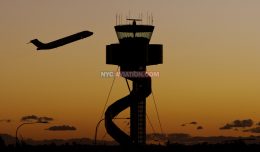On April 28, word quickly spread that American Airlines was experiencing problems with its iPad Electronic Flight Bags (or EFBs), causing some sporadic flight delays across the system. American Airlines was the first major carrier to gain FAA approval to implement EFBs, and as such has been an industry leader over the past few years; but as many early adopters of new technologies know, it’s not always smooth sailing.
A number of reports across social media stated pilots were unable to load individual flight plans on their iPads, and that perhaps flight crews were powerless without having certain up-to-date information on the tablets. Unsurprisingly, the reality of the situation was slightly different. Given the rapid adoption of EFB technology in today’s airline environment, it is certainly in the traveling public’s best interest to have accurate information about this added wrinkle to aviation that, like many new technologies, has the capability to both greatly streamline operations and, as in American’s recent case, to cause some headaches.
First, it’s important to clarify what an EFB is and is not. An EFB’s primary purpose in today’s airline cockpit is to replace paper aeronautical charts, long a staple of pilot life lugged around in large, heavy cases. Charts including en route, terminal (arrival, approach, departure), airport taxi, and reference information are all included in EFB products, and the ability to quickly search and swipe between these charts is generally a huge improvement over the old binders full of paper pages. On the other hand, an EFB in airline service is not generally used as a full flight planning tool, or to communicate with flight operations or dispatch personnel. EFBs are primarily designed to be used outside of an internet connection as a reference. In fact, many airlines have opted for iPads with wifi-only hardware, forgoing cellular connections. For the foreseeable future flight plans, operational information, and the like are still most likely to be transmitted via dedicated aircraft systems like digital ACARS messages and radio communications.
The key weakness in EFB use stems from a necessary holdover from paper charts: they still expire. As airspace and airports change operationally, aeronautical charts have to follow. Each time an update was distributed, paper charts would be replaced, requiring tedious re-filing and shuffling of old and new pages by each pilot. While the electronic version without a doubt streamlines this process, it’s not without its drawbacks. Arguably the most popular EFB product on the market is Jeppesen’s FliteDeck Pro, used by American and many other carriers. The highly capable app features an auto-update feature that downloads current charts to each pilot’s iPad as they become available. All a pilot has to do to ensure current charts (and therefore guarantee compliance with stringent FAA regulations) is glance at a page within the EFB app that shows either a red X or a green checkmark.
Of course, just as any one of us is capable of missing a one-off digital notification, pilots accustomed to automatic updates could conceivably miss if a particular update failed to download. It’s not hard to picture a fast-moving cockpit environment where, in the midst of a long day of domestic flying, in an effort to make an on-time departure, with half a dozen vital aircraft checklists to complete, a check for EFB chart currency could be skipped. Thankfully, this type of situation is sure to become increasingly rare as pilots grow more and more comfortable with EFB use in day to day flight operations, and as EFB products are continuously revised and improved.
In any case, it appears American’s issues were not widespread, and delays generally not long. In most instances, a fairly quick return to the gate for wifi access should have been enough to correct the problem and get the flight back on its way. Undoubtedly, Jeppesen’s customer service and technical teams will evaluate the incident for any fixes and improvements that can be made, and flight operations management at American will likely use it as a learning opportunity so as to reduce delays in the future. Overall, EFB’s are a positive technological step for the airline industry, and we can look forward to them becoming more and more reliable.
Andrew Poure is a lifelong aviation geek based in the Great Lakes region. Graduating soon with a degree in aviation management, he has frontline experience in airline and airport operations. Find him on Twitter.







